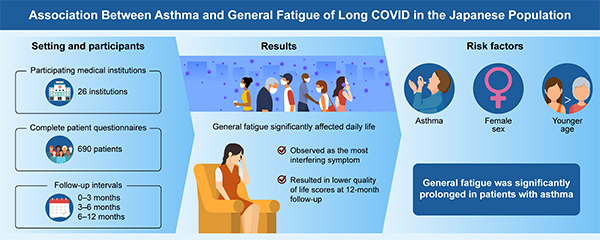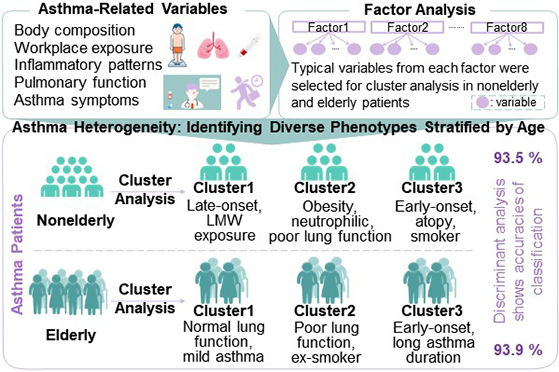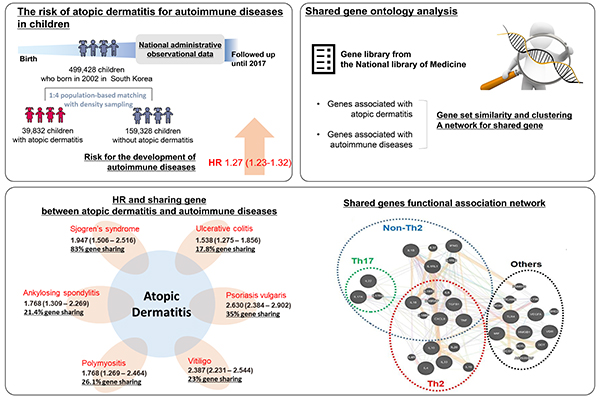Volume 73, Issue 2 (April 2024)
Editor's Choices
Editor’s comment: Long COVID causes multiple prolonged symptoms, including general fatigue, in patients recovered from COVID-19 infections. Sunata et al. conducted a multicenter cohort study at 26 medical institutions to identify the risk factors for general fatigue in long COVID. They found that asthma, younger age, and female sex were risk factors for prolonged fatigue by univariate logistic regression analysis and that asthma was an independent risk factor for persistent fatigue during the 12-month follow-up period by multivariable logistic regression analysis. They conclude that patients with asthma need to take strong preventive measures against COVID-19 to avoid sustained fatigue, thereby minimizing their social and economic losses.
Editor’s comment: Asthma has been classified into several phenotypes based on various factors, including age. Chuang et al. conducted a factor analysis to select 17 variables and classified subjects with asthma phenotypes using a two-step cluster analysis. They identified three clusters with different characteristics in nonelderly and elderly asthmatic adults, finding that asthma in elderly patients has different phenotypes than asthma in nonelderly patients. Their age-stratified cluster study also demonstrated heterogeneous clinical characteristics, occupational factors, and inflammatory patterns between nonelderly and elderly asthma adults. These findings suggest that classifying asthma phenotypes stratified by age may lead to more precise patient identification, bringing us closer to personalized disease management.
Editor’s comment: Atopic dermatitis and autoimmune diseases, both beginning at an early age, are immune-mediated diseases involving genetic predisposition. Although there have been several studies on the co-occurrence of atopic dermatitis and autoimmune diseases, the association between the two diseases is still controversial. Ahn et al. address this point using a national administrative cohort study involving 499,428 children born in Korea. They found that during a mean follow-up of 12 years, the group exposed to atopic dermatitis had an increased risk of autoimmune disease (hazard ratio, 1.27 [95 % confidence interval, 1.23-1.32]) compared to the unexposed group and that the hazard ratios of autoimmune illnesses consistently increased with two- and five-year lag times.





